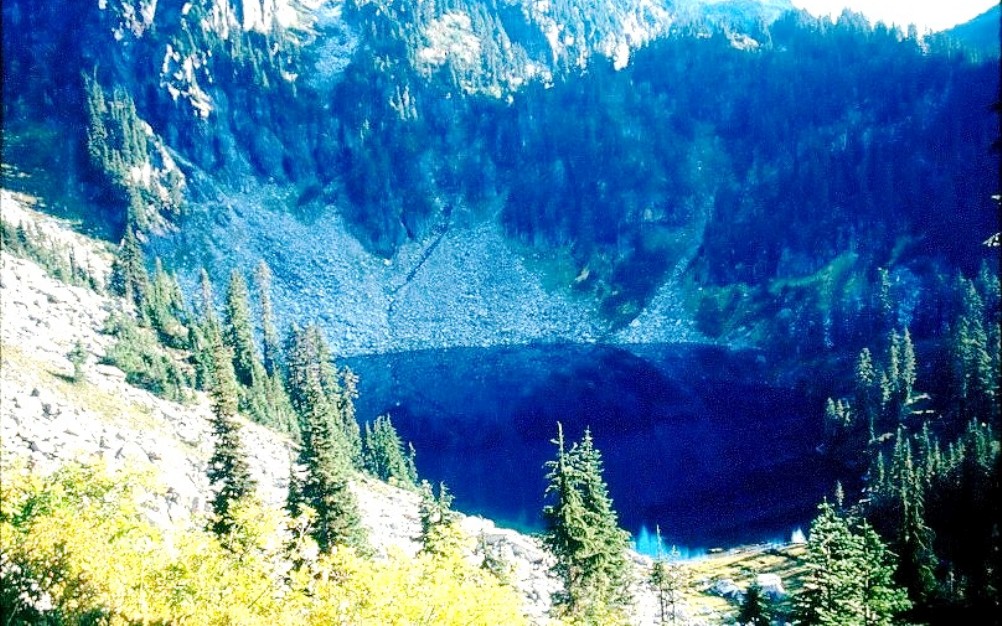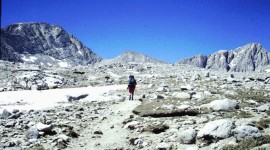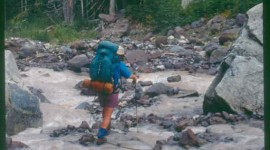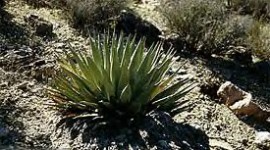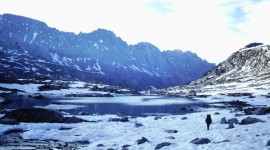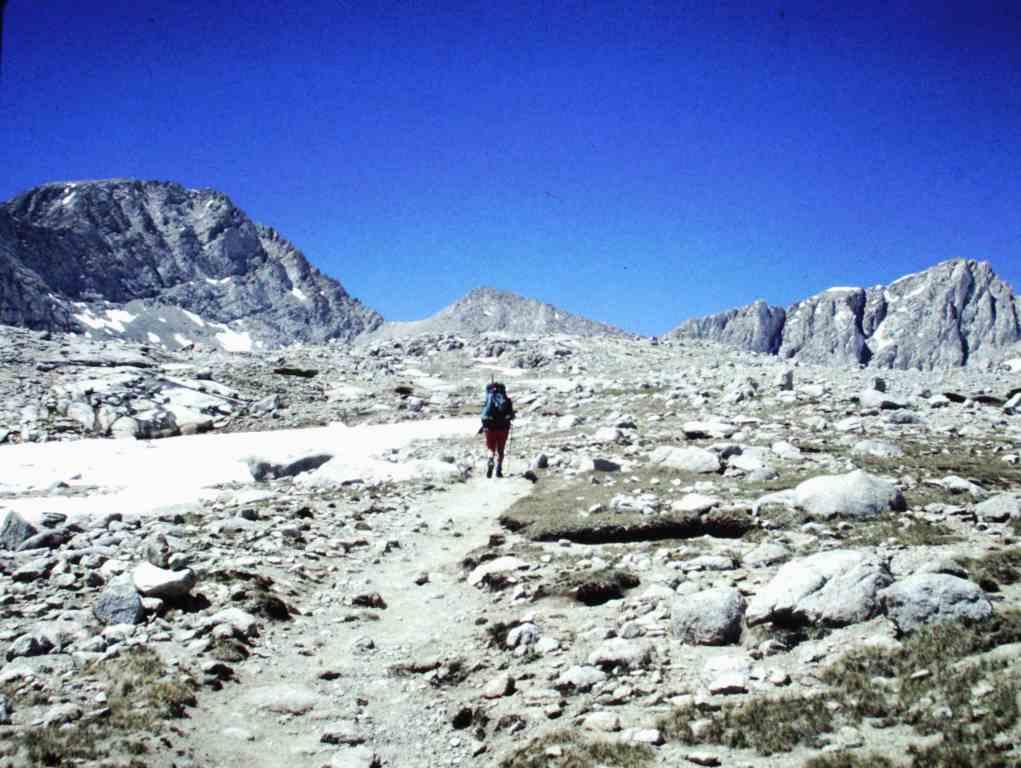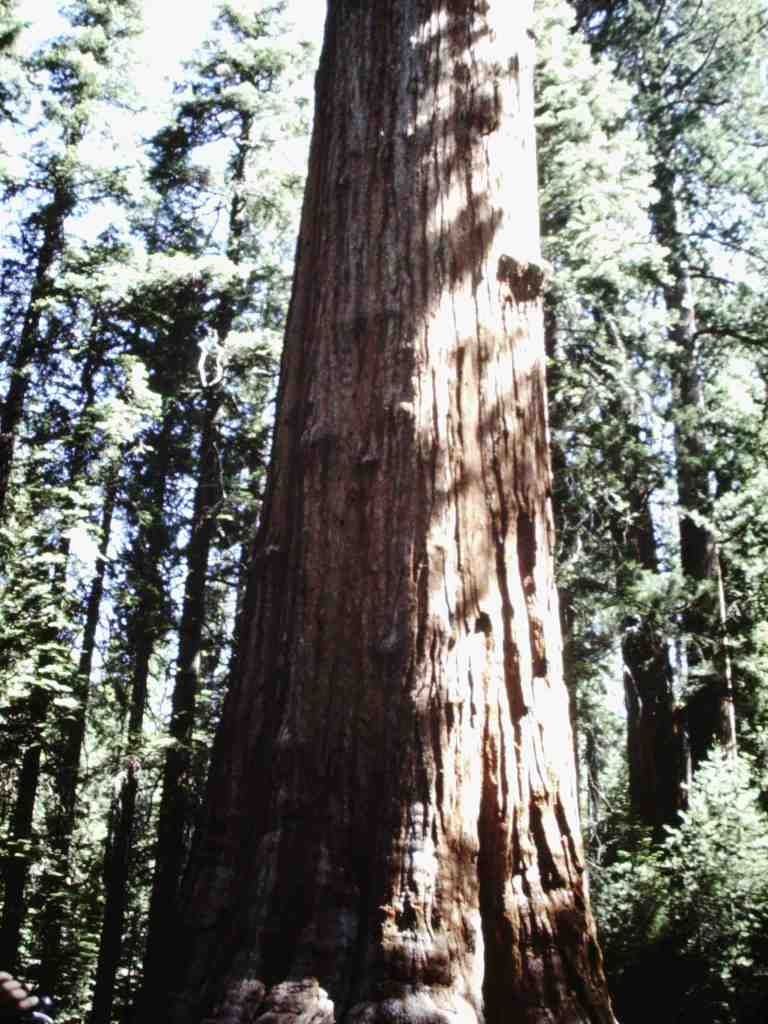I’ve just finished reading Cheryl Strayed’s Wild. In case you’re a hiker who has been living under a rock, the book is about a troubled young woman’s attempt to hike a thousand miles of the Pacific Crest Trail, which runs, in its entirety, nearly 2,700 miles from Mexico to Canada. I found it a compelling read, but to be honest, the book is less about the trail and more about the author and the internal journey she took from a place of confusion, depression, and grief to the possibility of wholeness.
Writing some 15 years after the actual journey, Strayed mines her memories with the clearer vision of hindsight, but nothing can change the fact that she embarked on the trail woefully unprepared. Insofar as this is a book about hiking, it is a book about how NOT to hike. Despite having made many trips to REI, where she was clear about her intentions to hike 1000 miles through some of the most challenging terrain in the contiguous United States, she apparently got some of the worst hiking advice on the planet — or didn’t listen to any good advice she did get. Starting out with a pack she couldn’t lift and boots that didn’t fit, she regardless survived what seems to have been mostly a heavily blistered and painful ordeal. Her book is now a movie in which she is played by Reese Witherspoon: So, a fairytale ending to what quite frankly reads like an avoidable nightmare.
I have to admit that Cheryl Strayed and I are not cut from the same cloth. First off, I was an experienced hiker before starting the PCT, which makes a lot of difference. Plus, on any hike, I’m a bit of an over-planner and a worrier. Yes, my journey had some ups and downs, and not only the literal ones: I had heel spurs that almost put me off the trail entirely, and my endurance was tested in places both high and dry, not to mention wet, cold, snowy, and filled with mosquitoes. But I don’t remember any tears.
With or without tears, a PCT thru-hike has its difficulties. This post is an effort to help aspiring hikers — including the hordes who are likely to be inspired by the movie — prepare for long distance hikes on the PCT and avoid some of the more predictable pitfalls. The downside? The best travel books and movies are based on disasters, most often involving unpreparedness — after reading this post, your hike may not present you with enough misadventures to pen a best-selling book. I can, however, guarantee you’ll have a better time.
In Your Bucket Because…
- The Pacific Crest Trail is rightfully called the Everest of hiking trails — a moniker it earns by its size, the scope of the undertaking, and scenery of mountains, rivers, canyons, and forests that is sometimes overpowering.
- The trail traverses some of the most iconic wild places in the American West — lands beloved by Ansel Adams, John Muir, and William O. Douglas. This is Wilderness — capital “W.” Wild.
- Good for anyone. Seriously, a six-year-old thru-hiked the trail (with his parents) in 2914. But this trail requires some combination of experience, humility, stick-to-it-iveness, preparation, and fitness. Much of what you need to learn the trail will teach you — but preparation can make the journey so much more enjoyable.
A Few Long Distance Hiking Ground Rules
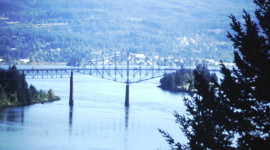
Many Pacific Crest Trail thru-hikers are veterans of other long-distance hikes, especially the Appalachian Trail. However, the Pacific Crest Trail has some challenges that surprise even experienced hikers. So let’s start with a few rules (which pertain to any long-distance hiker):
- Be as fit as possible before the start.
- In the first few days, take it easy on the mileage.
- Pay attention to water and water sources, especially at first: You cannot afford to be careless about water here.
- Be sure boots or trekking shoes fit. A bit loose is best: Your feet will expand.
- Pack as lightly as possible. You do not need what you think you do. Also, be wary of manufacturers who advertise “lightweight” gear — much of it isn’t. There are numerous books on lightweight backpacking that will help you know whether a six pound tent is “lightweight” (No, it’s not) and so on. Websites, too, can help you shed weight. You will thank them.
- Test-drive your gear. This means packing it, as well as pitching your tent, operating your stove (if you take one) and making sure those new clothes fit.
- If you’re a newbie, try to at least go out for a weekend backpack before you start the trail.
- Don’t compete with other hikers.
Making a PCT Thru-Hike Itinerary
In walking the PCT from Mexico to Canada, I didn’t only walk 2700 miles; I walked through six ecozones, from lower Sonoran desert in southern California to the arctic-alpine zone in the High Sierra. The blazing heat was enervating even after I acclimated to it. The rivers were swollen with snow-melt and looked impossible to cross. And ice and snow fields made High Sierra mountain passes (up to 13,299 feet) more a mountaineering course (complete with ice axes) than a mere “walk in the woods.” The majority of thru-hikers travel northbound, starting at the Mexican border about 50 miles east of San Diego in mid-spring. The combination of low, hot desert and high, possibly snow-covered mountains begins right at the start: In between the Laguna, San Jacinto, San Gorgonio, and San Gabriel Mountains, hikers cross lower Sonoran desert zones and part of the Mojave Desert before hitting the Sierra, and then, in northern California, the Cascades. It’s 1600-and-change miles to the Oregon border, then another 1000-plus through Oregon and Washington, usually in August and September, when the weather can turn cold, rainy — and even snowy.
It is possible for long-distance hikers to travel the Pacific Crest Trail southbound, but in an average year, a southbound hike requires a faster pace. Southbounders must wait until snow has melted in Washington state’s North Cascades mountains, usually some time in June. Southbound hikers then have to race in order to cross the High Sierra in California before winter storms begin. Note that all dates are approximate. Snow accumulations and spring temperatures vary enormously from year to year. The dates are a good starting point for planning, but check with the Pacific Crest Trail Association for current conditions., and be prepared to vary the itinerary accordingly.
Challenges of Starting a Pacific Crest Trail Thru-hike
Like Tolstoy’s unhappy families, each long-distance trail is challenging in its own particular way. Here are some issues that lie in wait for PCT thru-hikers, especially at the beginning.
- Heat: Most hikers start northbound, hiking in southern California. It takes about two or three weeks for hikers to become acclimated to working hard in hot dry weather. Even fit hikers are subject to dehydration and heat exhaustion (perhaps even more so, because the fitter a hiker is, the less likely he is to admit exhaustion and the need to slow down).
- Water: Unfortunately, it’s not easy to take it easy on southern California’s Pacific Crest Trail. The challenges start right at the beginning, there are only a couple of seasonal water sources in the 20 miles. The most conveniently located water source is Hauser Creek, 16 miles north of the border, which dries up in late spring. Unfortunately, Hauser Creek is not a safe place to camp, as it is on a route often used by illegal aliens some of whom may be desperate for food and water. Hikers often try to hike the entire 20 mile stretch on the first day, but this is a brutal way to start for all but the most fit hikers. If you start your hike during the main hiking season in late April, members of the PCT community are now putting out water caches and to help make the opening stretch less brutal. As you continue on, there are many sections where water is scarce. This is one reason it’s so important to get fit BEFORE the hike.
- Dry Campsites: Another option is to camp without being near a water source, if reliable water sources are farther than a new hiker can comfortably walk in a day. This requires carrying a lot of water (up to two gallons a person). It’s possible to dry camp with less water by cooking and eating at the last known water source, then carrying enough to the campsite to get through the night and the next morning’s mileage. Each hiker has to decide if it is easier to hike longer miles (to get to the next water source) or carry more water weight (in order to camp without a water source).
- Mileage:: Once hikers are broken in, they tend to average around 18 – 20 miles a day.
- Blisters: Many PCT hikers find that trekking shoes or other lightweight footwear are perfectly adequate for southern California. However, in hot weather, even sneakers can cause blisters. Trekking shoes should be loose-fitting, because feet swell in hot weather. Wear wicking socks next to the skin (never cotton). In addition, some hikers like the cushioning of light wool socks, which can help prevent blisters. Hikers who choose to wear boots should use lightweight models and be sure they are well-broken in. Expect your feet to get bigger, so it’s better to have boots that are slightly roomy.
- Snow. Hikers who start their hikes too early (before mid April) may be stuck in snow at higher elevations in the Laguna Mountains, the Jan Jacinto Mountains, the San Gabriel Mountains, or the San Bernardino Mountains.
ADZPCTKO: The “Annual Day Zero Pacific Crest Trail Kick Off” Party
The ADZPCTKO (Annual Day Zero Pacific Crest Trail Kick Off) event was designed to help new thru-hikers at the beginning of their Pacific Crest Trail thru-hikes. It is also a way to meet other hikers. This hiker fair/kick-off party takes place at Lake Morena State Park, 20 trail miles from the Mexican border, in late April (usually the last weekend). The ADZPCTKPO team and volunteers put out water caches, give presentations and demonstrations on lightweight hiking gear and arrange water caches and rides so that hikers can slack-pack (hike without carrying a backpack) from the border to Lake Morena. Note: Even without a pack, a 20-mile first day in the desert is tough. Of course, even with all the preparation of the world, the PCT is still a 2,700-mile behemoth that challenges hikers in surprising ways. But if you’re going to take months of your life to do a long hike, respecting the undertaking will make a huge difference in your experience. Cheryl Strayed, by her own admission, didn’t respect herself much when she started the trail as a last grab to find the person she had been before she “strayed” (her name is one she chose). Nor did she respect the trail. By the end, she had learned to respect both. The trail has that effect — whether you want it or not.
Practicalities
- The Pacific Crest Trail Association is the go-to group for the PCT, offering resources, as well as thru-hiker permits.
- The PCT guidebooks (now in three volumes: Pacific Crest Trail: Southern California
, Pacific Crest Trail: Northern California
, and Pacific Crest Trail: Oregon and Washington
) published by Wilderness Press are the books to get. Heed the authors’ advice: It’s golden.
- Trail Life: Ray Jardine’s Lightweight Backpacking
is the classic book on ultralight hiking techniques. My book Hiking Light Handbook (Backpacker Magazine)
is an introduction to the subject intended for less experienced hikers. Both will help you lighten your load and learn to think about gear.
- Don’t carry the entire guidebook! Even the authors themselves tell you to rip out and carry only the part you’ll need for each section. The rest goes in your resupply boxes for each subsequent section of trail.
- Most hikers resupply by using mail drops, where they pack food, toiletries, and guidebooks for a trail segment (after calculating how many days they expect it to take) and send the package to themselves in care of post offices and businesses along the way. The guidebooks have a complete list of addresses.
- Take more money than you think you’ll need (and far less gear than you want!): Gear will break, and a hotel room and restaurant meal looks mighty fine every once in a while.
